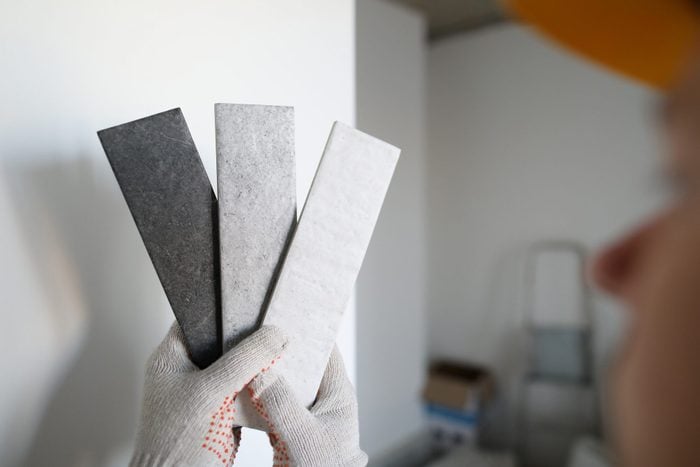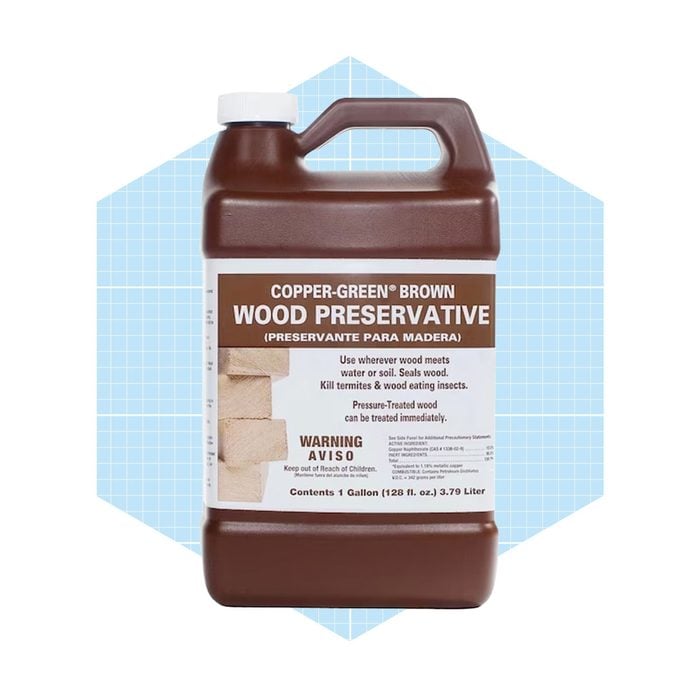Charring Wood as a Preservative
Our final entry is a technique rather than a treatment. Charring creates a hard surface on the wood, making it more resistant to insects, moisture and (perhaps counter-intuitively) fire.
This all-natural technique, good for interior or exterior projects, relies on zero chemical treatments. For more details, see this article on Shou Sugi Ban: The Art of Japanese Wood Burning.
ⓘ
What to Look for in Backsplash Alternatives to Tile
While you’re obviously seeking out backsplash options that aren’t tile, there’s more to your search than simply picking the first alternative you come across. Truth be told, many factors to consider are similar to what you’d look for in tile. Here are a few major sticking points to keep in mind while you shop:
Quality Materials
Ultimately, the overall lasting power of your backsplash will be determined by two things: how you care for it in its day-to-day use and the materials used to make it. You can take amazing care of your backsplash, but it won’t make much of a difference if the overall quality is lacking. This could lead to premature cracking, discoloration, and worse. Ensure you’re getting something made well to start with; you’ll be thankful for it in the long run.
Ease of Installation
This is more dire if you’re looking to install your tile alternative backsplash yourself. The easier it is to install, the fewer speedbumps you’ll hit along the way. Just remember that if something seems too simple, it might not last as long, necessitating more regular replacement. However, more difficult installations might require the help of professionals, which will add to the overall cost.
Cost of Maintenance
Everything requires regular care to be kept in working order, even backsplashes (whether tile or an alternative). Typically, this means regular cleaning, especially when they get sprayed with food during cooking. However, some backsplash alternatives will require more work than others. Coatings, for instance, break down over time, especially with increased exposure to oils, food, heat, etc. This means you may need to periodically reapply them, which adds to the overall investment.
How We Picked These Backsplash Tile Alternatives
Utilizing a combination of personal investigative DIY and home improvement knowledge, reputable brands and products, popularity and more, we cast a wide net in our search for tile backsplash alternatives. Then, we narrowed it down to the best of the best, using empirical data gathered from customer testimonials to determine the best tile backsplash alternatives currently available.
Why You Should Trust Us
I have been a home improvement and DIY journalist for over a decade, with my byline appearing in numerous international publications, such as MSN, Fox, Yahoo, AOL, USA Today and more. I take pride in my investigative skills, matched by my lengthy expertise in home-focused product journalism.
FAQ
What is the cheapest backsplash option?
You may have heard of a material called peel-and-stick, which is kind of like wear-resistant wallpaper. It’s very cost-effective and easy to install, but it has some downsides. For instance, air bubbles can get trapped beneath it during installation, which is a bit unsightly and will require you to peel it off and try again. Furthermore, it’s not as durable as some other options—sure, it may last a while, but it won’t last forever. If you want something that will last longer, you must be willing to spend a little more.
What is the easiest backsplash to maintain?
Some people will use glass plating to cover their wallpaper, which is a pretty solid alternative to tile that will retain the original appearance of your kitchen. It’s also very easy to maintain, as you can simply use glass cleaner. That said, it will show prints, grease and food spots more than something solid and darker, like coated wood.
What is the difference between backsplash and splashback?
These are regional terms for the same thing, with backsplash widely used in the USA and splashback being a UK term.
Is it better to have a backsplash or no backsplash in the kitchen?
You might think you can forgo a backsplash altogether. And that’s true, but there are some caveats. The material behind your cooking spaces—be it wallpaper, paint or otherwise—will be much more susceptible to damage, like staining, and will potentially be more costly and difficult to replace. If you’re weighing the options, a backsplash is probably a larger initial investment, but it will save you money and time in the long run.




























